
![]()
Abruzzo & Molise, an ancient storytelling along the Tratturo, 7 Days
Among fortresses, pastures, and ancient sheep-tracks, in jeeps, on foot and on horseback
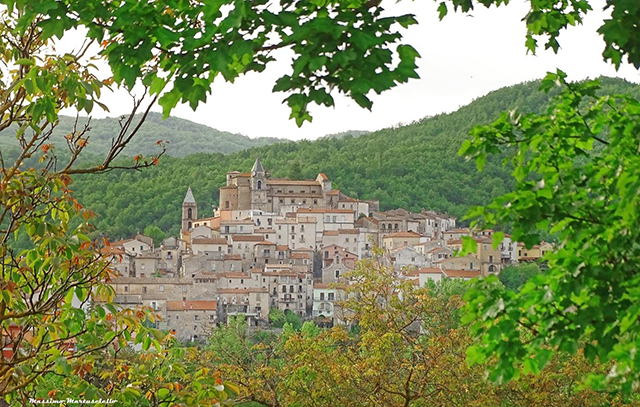
This is a country-chic adventure to experience the ancient transhumance, a journey full of magic and emotions, a jump back in history but also in biodiversity. We will venture together to rediscover traditions handed down over the years, now almost disappeared. In this journey, the culinary experience is a testimony of the most ancient flavors. Exploring these areas of Abruzzo and Upper Molise off-road, on foot and on horseback, along the “Tratturo Magno- sheep-tracks” is an experience you should try at least once in your life. It allow us to discover a new rhythm in travel, that of those who have used these routes for thousands of years to take their flocks from the mountain pastures of Abruzzo to the Adriatic Sea. We will meet the shepherds who will show us how to prepare the famous “caciocavallo” cheese and tell us about their traditions. We will also meet those who have not yet stopped making the transhumance and are still the guardians of this ancient route.
Abruzzo:
There are still several regions of Italy that are mysterious in many different ways, and Abruzzo is certainly one of them. A land of shepherds, ancient paths and deep silence, but also of sea and coast. In this land, the echo of a past that is more than ancient, almost ancestral, resounds powerfully and it can still be perceived in its numerous villages and savoured in its welcoming cuisine, linked to a very long tradition of hospitality.
Molise:
There is an Italian joke that says: "Molise does not really exist". A joke that hides a great truth, as this region still represents for the italians themselves a great mystery and a land yet to be discovered. The reasons to explore Molise are many if you consider that it is the second smallest region in the country, but it has such a high concentration of history, natural treasures and interesting traditions.
*What is “BORGO”
The literal translation of Borgo in English would be “Hamlet” or “Village“ but these words do not fully explains the meaning of “Borgo” is.
A “Borgo” is a fascinating, ancient, small Italian town, generally fortified and dating back to the period from Middle Ages to Renaissance. Walking in a “Borgo” is a step back in time, a walk through history, a typical Italian experience.
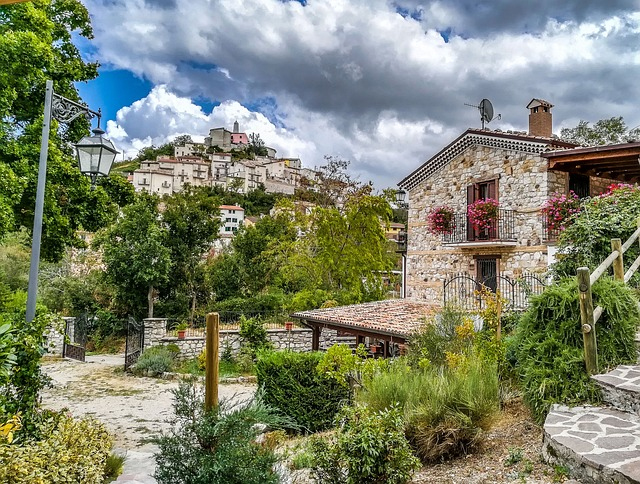
Itinerary
Day 1: Rome – Santo Stefano di Sessanio (170 km)
The highest castle in Italy and one of the most beautiful villages of Italy.
Departure in the morning from Rome by van. We reach Santo Stefano di Sessanio. Afternoon dedicated to two enchanting visits. We have a pleasant soft trekking/walk to the Rocca di Calascio, which literally dominates the Tirino valley and the Navelli plateau, situated on a ridge 1,460 meters above sea level.
The building is so well integrated into the landscape that it seems to be naturally created by the mountain itself.
We also enjoy a visit to the village of Santo Stefano, included in the Club of the Most Beautiful Villages in Italy, a true gem set among the mountains.
Under the leadership of Francesco de' Medici it became known for the wool trade "carfagna," a coarse black wool used mainly for military uniforms and monks' habit, produced in Santo Stefano and processed in Florence. The Medicean Tower, which has always dominated the central core medieval, was destroyed by the 2009 L'Aquila earthquake and is being rebuilt. Overnight stay in hotel.
Included: dinner, transportation and overnight.
Rocca Calascio
Rocca Calascio Castle is the highest castle in Italy. The fortress should date back to the year 1000 even if the first historical act which testifies its presence dates back to the 1380. It originally had a military and strategic function and, over the centuries, soldiers, servants, shepherds, farriers and merchants settled in the surrounding lands with their families to be close to the fort and ensure the protection of its walls. From up there it was easy to check the roads of the valley. Also for the transhumance its role was fundamental, becoming at the Medici temple an economic crossroads for wool and fabrics. The white stone structure has a central body, a wall circle and four corner towers with a circular base and steep slopes. Access was through an opening on the eastern side located about five meters from the ground, which was accessed via a wooden ramp, originally retractable, resting on stoned shelves. The castle was damaged by the earthquake of 1348 and subsequently by that of 1461. It has been restored many times between 1986 and 1989.
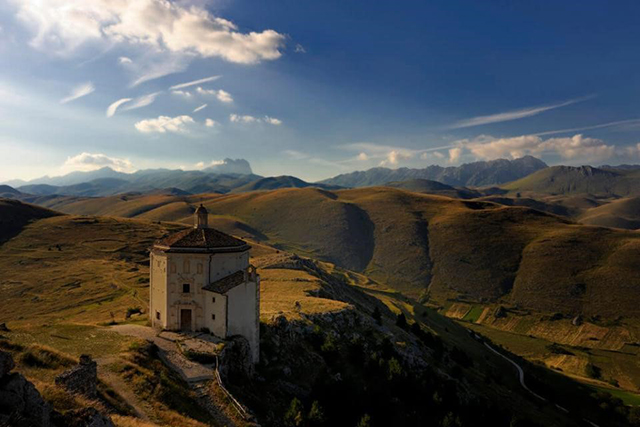
Day 2: Santo Stefano – Montedimezzo – Capracotta (140km)
Among the wooded areas protected by UNESCO, by jeep, on foot or on horseback.
In the morning we head southwards, to the MAB Reserve of Montedimezzo, one of the only seven Italian biosphere reserve listed by UNESCO under the "Man and Biosphere" Program (worldwide there are 329 in 82 countries). The environment is typical of the inland central-southern Apennines, with variegated forms and predominantly clayey or fliscioid soils (sandstone and marly limestone). The morning activity includes a mixture of off-road and soft trekking across this paradise where absolute silence dominates (3h trekking). The reserve protect deers in difficulty, following their trauma or infirmity and taking special care of them. One of the aims of the MAB project is to emphasize the relationship between man and forest: man is therefore not a stranger to the forest ecosystem but, with his multiple activities, he is influenced and he influences the forest itself.
Lunch is in a local restaurant in Molise heights. A chance to taste local flavors and enjoy breath taking panoramic view.
In the afternoon you can continue with the discovery of these areas aboard the unstoppable Land Rovers, on foot, or, a horseback ride (as an extra optional activity*) of about 2 hours. This area is ideal for horse riding, away from roads and people. The landscape varies from hilly to mid-mountain with endless fields alternating with beech and oak forests. Transfer to hotel in Capracotta, one of the highest villages in Italy, which is a major ski resort.
Overnight the hotel or similar.
Included: Breakfast, lunch and dinner, transport by 4x4 car and van.
Capracotta
Capracotta is a well-known ski locality equipped with two very important facilities, one dedicated to downhill skiing, in the Monte Capraro locality, equipped with a chairlift, and another for cross-country skiing, which is located instead in the Prato Gentile locality, and was the site of the Italian Absolute Cross-Country Skiing Championships in 1997. The origins of the village's name are linked mainly to a legend, research instead claims that Capracotta derives from the Latin "castra cocta." military camp, an expression probably related to a Roman detachment that had its headquarters to control the Sangro valley. Famous are the town's many fountains and the Garden of the Flora Apennines, ideal for a nature walk. Among the specialties cooked in Capracotta, the pezzata is one among the oldest. The recipe dates back to the period when shepherds made the transhumance between the mountains of Alto Molise and the Tavoliere delle Puglie.
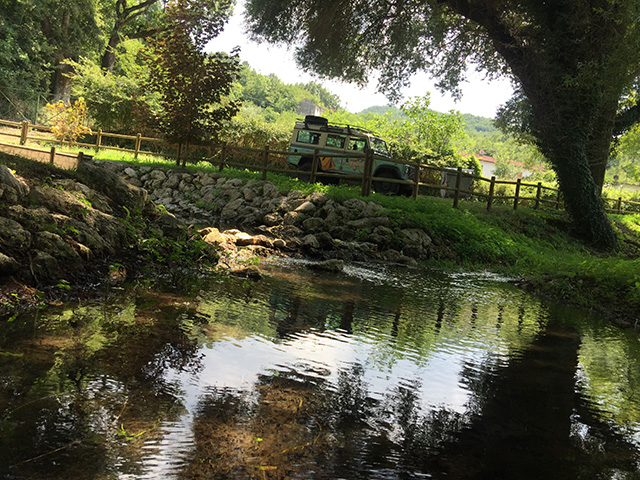
Day 3: Capracotta – Pescolanciano – Capracotta (100km)
Ancient manufacturing traditions, Paleholithic finds and healing plants.
This day focuses on various interests. We start with a nice walk along a part of the sheep track – stock route direction Pescolanciano village – which will bring us back in time. We take a short detour to Agnone, to visit to the Pontifical Foundry of Campane Marinelli, an Italian metallurgical family-run company, specialized in the construction of bells. Founded and managed today by the Marinelli family, it is the oldest Italian and among the oldest in the world. The company boasts the production of important bells, such as those of the Sanctuary of the Blessed Virgin of the Rosary of Pompei, those of the Abbey of Montecassino, of the Cathedral of Buenos Aires and the bell of the Jubilee 2000 “Giovannea", commissioned by Pope John Paul II. We walk through the historic center and then lunch in a local restaurant.
We then reach the amazing Paleolithic Museum of Isernia, whose collection includes all the objects from the archaeological excavation of Isernia La Pineta. At this site Paleolithic finds from about 600,000 years ago were uncovered, an exceptional discovery that constitutes a crucial point for the study of Italian and European prehistory. Another short transfer will take us to the prestigious Campi Valerio Winery, for a walk through the vineyards and an optional tasting of the wines. Return to Capracotta, for dinner and overnight stay.
Overnight the hotel or similar.
Included: Breakfast, lunch, dinner, transport. by van or 4x4 car.
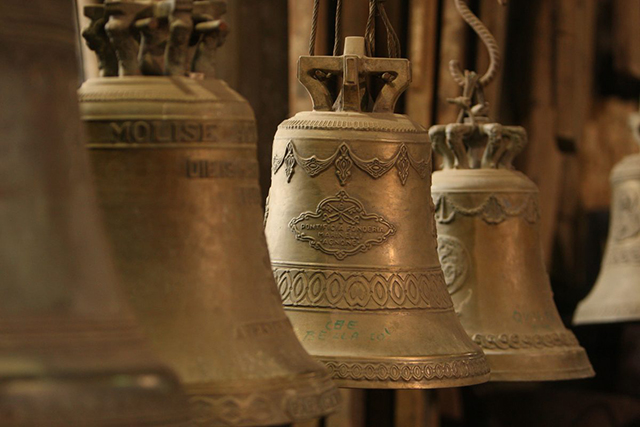
Day 4: Capracotta - Campobasso (60km)
A deep experience of shepherds’ daily life.
This morning we walk along the sheep track southwards, towards Frosolone and we continue off-road crossing the rivers many times experiencing a true adventure.
We take a pleasant picnic lunch* with all comfort in the nature, as an “open-air restaurant”. In the afternoon we continue our journey with the off-road vehicles. We will be hosted by a shepherd to learn more about his lifestyle, traditions and how we prepare a local and delicious cheese or other milk products. Back to our hotel for dinner and overnight.
Overnight the hotel or similar.
Included: Breakfast, pic-nic lunch, dinner, transport by 4x4 car.
*according to the season we might have an alternative experience.
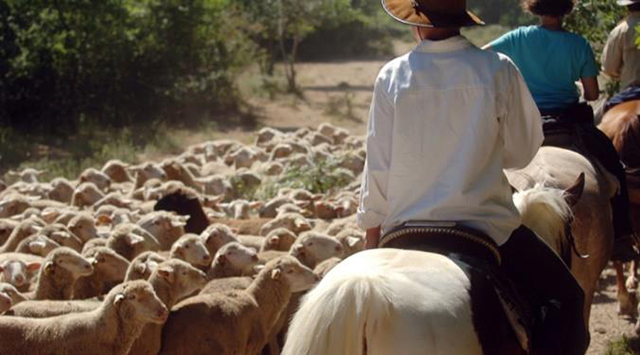
Day 5: Campobasso - Cusano Mutri – Altilia Sepino – Campobasso (120km)
Discovering the Samnite Apennines, wading across rivers and reliving the places of battle between Romans and Samnites.
We start the morning driving along the route on the Matese Mountains, the most important massif of what is called the Sannita Apennines, a place steeped in history, as well as characterized by a superlative nature. We cross over for a few kilometers into the Campania region, in Cusano Mutri, for an unusual water trekking (3h)*, a real river walking, easy for everyone, wearing waterproof suits provided by our local partner. With this activity you can see the gorges, waterfalls and vegetation along the rivers up close.
Along this path the Samnites and Romans fought for the conquest of Altilia Sepino that we reach soon after lunch (in a restaurant). Here we admire an incredibly well-preserved Roman settlement, which clearly shows all the characteristics of the urban structure. It rises at the point where the sheep-track of the transhumance crosses the road that connects the Matese to the sea. It was originally a Samnite village, Saipins, built in a strategic position at 950 meters above sea level. When the Romans invaded it during the third Samnite war (293 BC), the population was forced to move downstream and the city became a Roman administrative center. The walls were built later, by the emperor Augustus, more to give prestige to the center than for real protection needs.
We access the archaeological area through one of the wonderful doors located along the walls, we observe the remains of the ancient towers and trample the Decumanus, whose sides are home to the artisan shops, fountains and thermal baths. The extraordinary basilica is visible, with Doric-style columns and the forum, an ancient place for political-administrative functions.
At the end of the visit we reach our hotel for dinner and overnight.
Included: Breakfast, lunch, dinner, transport by 4x4 car.
*according to the season we might have an alternative experience.
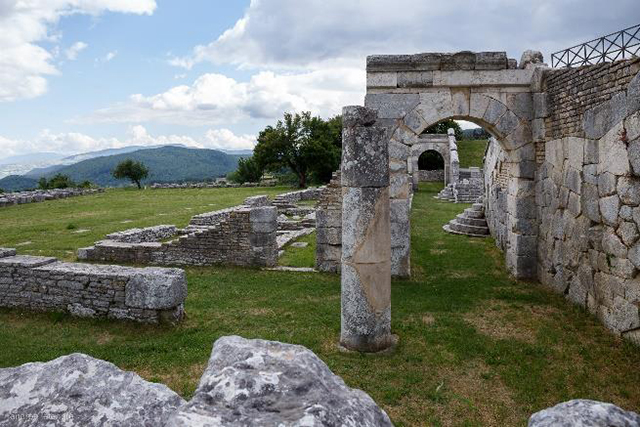
Day 6: Campobasso - Occhito Lake – Campobasso (110km)
The enchanting scenery of the woods on the slopes of the lake.
In the morning departure for Occhito Lake, an artificial lake that rises on the border between Molise and Puglia, created by the barrier on the Fortore river: a true oasis of peace. The lake is a fundamental wetland, a stop for migratory birds, including the gadwall, the wigeon, the shoveler, the tufted duck, the pochard, the wild goose and the cormorant. We will enjoy a jeep excursion and trekking experience along the lake walking on a Tratturo. After lunch in a local restaurant it is be possible to continue exploring the area on foot or on horseback (as an extra optional activity*).
We reach our hotel in Campobasso for dinner and overnight.
Overnight the hotel or similar.
Included: Breakfast, lunch, dinner, transport by van and by 4x4.
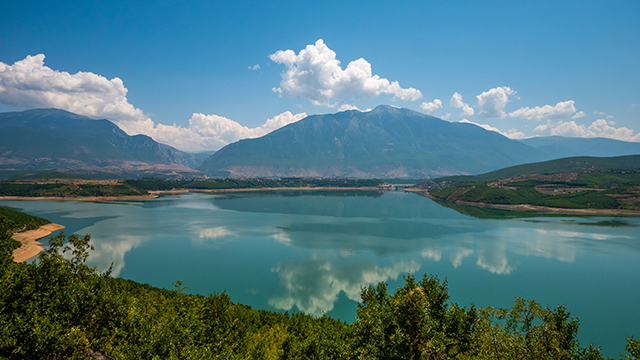
Day 7: Campobasso – Rome (230 km)
After breakfast transfer by minibus or van to Termini station or Rome Fiumicino airport.
Group departures 2024:
8th – 14th April
6th – 12th May
10th – 16th June
9th – 15th September
7th – 13th October
11th – 17th November
From Dec to Apr trip available on request with small changes*
(*no picnic outside on day4, no water trekking on day5, but alternatively due to the weather condition we visit local farms and we enjoy a delicious lunch in local houses.)
COST: Request for pricing
The quote includes:.
- Meet and great
- Transfers to/from hotel/apt with minivan/van
- 4x4 cars as per itinerary (5gg)
- Fuel
- Overnights in FB (with exception of day 1 and day 7)
- Meals as per itinerary
- Water trekkings (Apr to Oct departures)
- Luggage transportation
- Local tax
- Entrance fees to parks and museums
- Local guides and tour leader
The quote does not include:
- Horse riding (extra 20euro/hour/pp)
- Travel insurance
- Personal extras
- Tips
- Meals not specified
- Extra drinks
- Everything not stated in “the quote includes”.
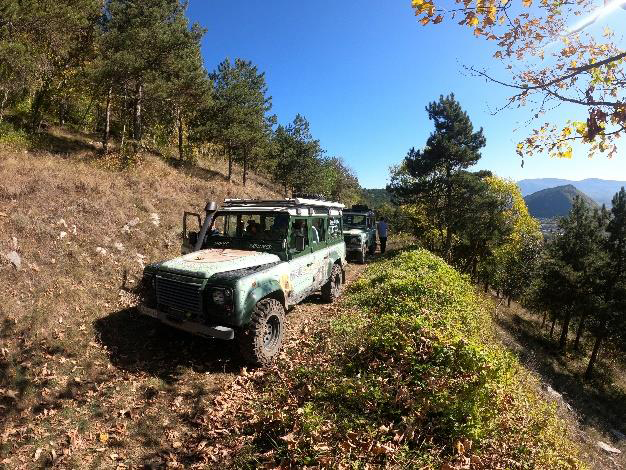
For more information
Contact:
Dive Discovery
@
1 800 886-7321
(415) 444-5100
or
Request Info
